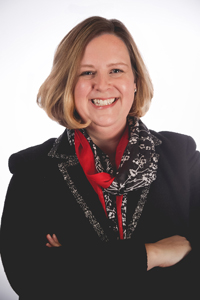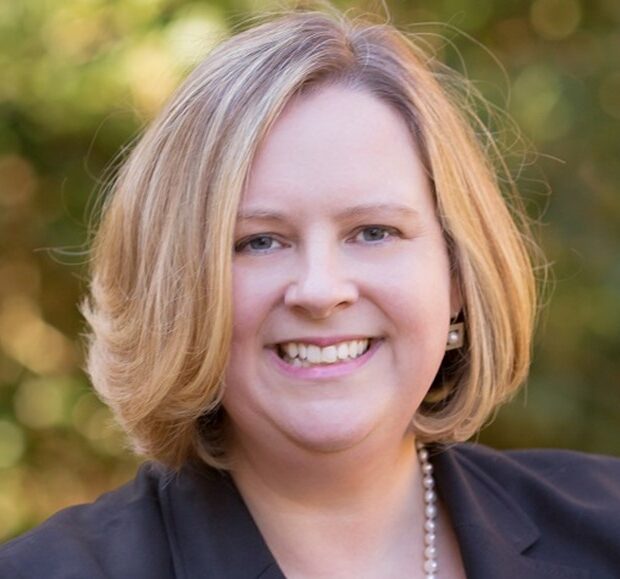Today’s guest post is by the Alliance’s president & CEO, Laura Lott.She’s been on the hunt for resources to help AAM become a more inclusive workplace, and that search took her to Minneapolis for what turned out to be a primo conference on the topic. I encouraged her to share that experience with you here on the Blog. Perhaps next year we will have a whole museum contingent at the Workplace Inclusion Forum…

Last month, at the advice of Chris Taylor – the diversity officer at Minnesota Historical Society, I attended the 2016 Workplace Inclusion Forum in Minneapolis. It was a really incredible, stretching experience – mental gymnastics, as one presenter described it. After hearing some of my immediate observations, Chris recommended I talk about my experience publicly – to encourage more CEOs and directors in the museum field to take steps to learn about diversity and inclusion. Chris has been a mentor to me in this area since we were introduced late last year. And I know he is working so hard to bring true inclusion practices to MNHS and to the museum field. I owe it to Chris to do as he advises. So, here goes…
I consider myself pretty worldly and, having grown up in a middle class family outside of New York City in the 1980s, totally accepting of diverse people and cultures. I was an exchange student in Tokyo for a year in high school, living with a Japanese family and attending a Japanese school. I chose American University, in part, because of its tremendous School of International Service, diverse student body and the global focus of its academic programs as well as its location in the global city of Washington DC. My family is a wonderfully messy mix of religious traditions, and we love to travel around the world.
Early in my career, I helped oversee and report on a Fortune 500 company’s first diversity initiative as part of the corporate social responsibility department, learning about EEOC and supplier diversity best practices. I entered the male-dominated financial services industry as a young woman and, last year, was the first woman (and I think probably the first person under 40) to be named president and CEO of AAM.
Point being, I felt pretty confident that I had some relevant experience in different aspects of diversity. Though, I’m always curious – and I hunger to learn more. With diversity, equity, access and inclusion a priority in AAM’s next strategic plan, I specifically wanted to learn more about the D&I field. And AAM itself has a lot of work to do – to be a more diverse and inclusive workplace, and to some extent, I feel like I have to start this work “at home.” A workplace inclusion conference seemed right.
I was a little nervous walking into an unfamiliar conference dominated by people who have made their careers as chief diversity officers…many in very big companies with lots of resources. I assumed, as a white person, I would be in the minority – something I don’t experience frequently and which I don’t have particularly fond memories of from my time in Japan. I was a little afraid of conversations about “white privilege” and #blacklivesmatter, especially as the Hennepin County attorney was announcing officers would not be prosecuted in yet another case of a young black man being shot by the police.
The conference’s opening session was an enlightening speech by Anand Giridharadas, a New York Times columnist and author. Anand talked about the decentralization of the world – where the US is not at the center and white Christian is no longer the “default setting.” It was important – and lofty enough to feel more inspiring than threatening.
Then, I went to the #RaceMatters session. It was uncomfortable at times. I thought, optimistically, “I must be doing something right!” Everyone – and leaders especially – have to make themselves vulnerable to make real progress.
It got tougher.
Throughout the next two days I learned about the “Intercultural Development Continuum” (Shoot, I thought my “color-blindness” was a good thing.); talked about “coded language” (and realized I have said some of those things…recently.); and faced conversations about whether all women (white and black) are in this effort for equality together. I felt, at various times, guilty, embarrassed, disappointed with myself, and even ashamed.
Some conversations were downright exhausting and overwhelming…is there really any way to succeed in this work?
I took solace when even experienced diversity officers admitted they often feel overwhelmed and unequipped to deal with the emotions and challenges this work entails. We spoke about it as a journey, about having to meet people where they are and the importance of perseverance. I realized inclusion, like anything else, is a skill. I have to study, practice and apply it over and over again, continuing to perfect my practice – just like yoga, public speaking or any other skill.
The truth is I’m terrified…of making a mistake, of inadvertently saying something insensitive – looking naive or stupid (perhaps in this very post!) or, worst of all, compounding the hurt many feel from years of insensitivity, discrimination and racism with my well-intentioned words and actions. I’m afraid of critical and angry voices who think I should do more or different things. And I’m afraid of pouring myself into this – and still not having a big enough, tangible impact.
The fear can be – and too often is – paralyzing.
I won’t be paralyzed. There’s no time to wait. There are tools to help. And I believe people will help…if I’m sincere.
There was a conversation at the end of the conference about boldness. And on the prestigious panel of diversity officers from Starbucks and Major League Baseball and others, some said it’s not bold to simply do the right thing. Maybe it’s not bold. But it does take courage to willingly step into discomfort.
It reminds me of learning to fly an airplane. Actually, the flying part was fine. But I had such a hard time landing! Practice flight after practice flight, I’d bounce that poor little single-engine Cessna down the runway. I was so embarrassed I nearly quit. I had never before failed quite so awesomely – and publicly. Thankfully, due to a supportive flight instructor (with a strong stomach), I kept with it – and enjoyed the thrill of flying – and landing – solo, ultimately earning my pilot license and a lifelong hobby that brings me remarkable joy.
In this much more important and complex area of diversity and inclusion, I still have a lot of work to do. But I’m not staying paralyzed, and I’m certainly not quitting. I’m taking steps – educating myself, investing time and money in training myself and practicing my new knowledge. I’m putting this naked admission out there, in hopes that museum directors/CEOs will join me at next year’s forum.
Diversity & inclusion isn’t about “fixing” or “solving” or “being done.” Instead it’s about “transforming” and “improving” and “developing.” It’s a journey of discovery. Isn’t that what museums are all about?
Elizabeth Merritt












Laura, thank you for writing this, even in the fear of how people might respond. These kinds of discussions are very much alive in the library field as well. April Hathcock, Scholarly Communications Librarian at NYU, has written some very thoughtful pieces, and is presenting at many conferences and moderating Twitter chats. Your post made me think of a recent encouraging post on her blog: https://aprilhathcock.wordpress.com/2016/04/13/youre-gonna-screw-up/ and her article about diversity in LIS makes many points and suggestions that apply to museums as well: http://www.inthelibrarywiththeleadpipe.org/2015/lis-diversity/
It's crucial for those of us with privilege to keep doing the work and engaging in dialogue around these issues. Thanks for your contribution. (Lisa Hubbell)
Thanks, Laura, for baring and sharing. Lots of us can relate. It's important to listen, learn, talk, act, correct, try again — Nothing ventured, nothing gained — And we can't afford not to make gains. Too much humanity at stake.
Thanks, Lisa. I will check out April's blog!
Thanks, Steve. I agree!
Terrific post, Laura. Thank you. Keeping it personal and specific makes it inspiring, relatable, and actionable–and on this absolutely crucial topic, that is what's needed. Plus immediate steps large and small by all of us. Again, many thanks.
Thanks for sharing this, Laura. I think it was wonderful that you attended that conference, and I resonate with the experiences you describe in engaging in dialogue about race and diversity. It can really be tough but is so important. Thanks for modeling this for the field. Gretchen Jennings
Thank you, Gretchen. I think these are some of the most critical issues of our time.
Thanks, John. Look forward to working with you and AASLH on steps large and small. I know this is a priority for you as well.
It's really great you had the opportunity to go to this conference, Laura. Looking forward to seeing how we can use some of what you learned to move AAM forward and bring this to members and museums across the country.
I appreciate your honesty. Your post illustrates how being open and truthful leads to personal growth. I'm going to share your post with my local race discussion group, which is called R.A.C.E. or Reconciliation Achieved through Community Engagement.
Thanks, Laura, for sharing your own journey. Openly, honestly, bravely. As I was reading it I was reminded of Debbie Irving's recent book Waking Up White and Finding Myself in the Story of Race.
Looking forward to the many opportunities we'll have to delve deeper into issues of museums and race at AAM.
Daryl Fischer